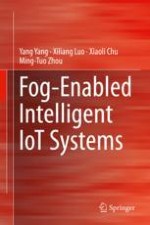2020 | OriginalPaper | Buchkapitel
6. Fog-Enabled Intelligent Transportation System
verfasst von : Yang Yang, Xiliang Luo, Xiaoli Chu, Ming-Tuo Zhou
Erschienen in: Fog-Enabled Intelligent IoT Systems
Aktivieren Sie unsere intelligente Suche, um passende Fachinhalte oder Patente zu finden.
Wählen Sie Textabschnitte aus um mit Künstlicher Intelligenz passenden Patente zu finden. powered by
Markieren Sie Textabschnitte, um KI-gestützt weitere passende Inhalte zu finden. powered by
